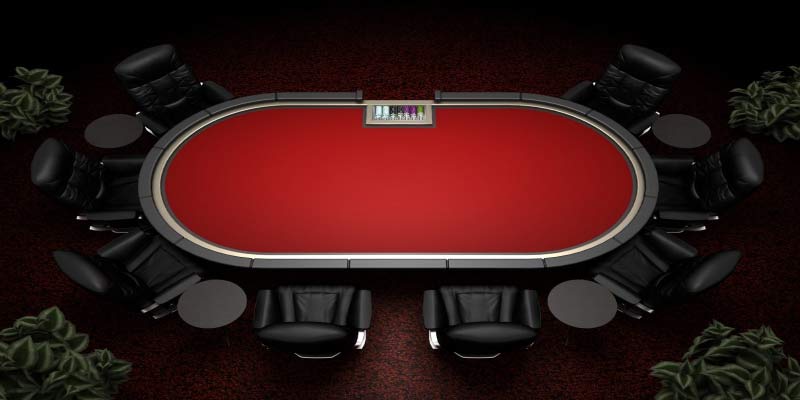Poker Tables – The Heart of the Game Unveiled

Poker Tables – The Heart of the Game Unveiled
Poker tables are more than just a piece of furniture—they’re the centerpiece of one of the world’s most beloved card games. Whether in a bustling casino, a cozy home game, or an online platform, poker tables set the stage for strategy, skill, and excitement. But what makes these tables so essential, and how have they evolved over time? Let’s explore their history, design, and tips for choosing the perfect poker table to elevate your gaming experience U888.com.
The History and Evolution of Poker Tables
The origins of poker tables are closely tied to the rise of poker itself, which emerged in the United States in the early 19th century. Early games were played on makeshift surfaces—think wooden barrels or dining tables. As poker grew in popularity, dedicated poker tables began to appear, designed specifically to enhance gameplay. By the late 1800s, saloons and gambling halls featured round or oval tables with felt surfaces to keep cards from slipping and chips organized.
Over the decades, poker have evolved significantly. Modern designs now incorporate advanced materials, ergonomic features, and even technology for online play. From luxurious casino setups to portable folding tables for home use, poker tables have adapted to meet the needs of players worldwide while retaining their core purpose: facilitating a smooth and enjoyable game.
What Makes Poker Tables Unique?
Unlike regular tables, poker are purpose-built for the game. Their design typically includes a padded felt surface—often green, though colors vary—to reduce noise and provide a soft landing for cards and chips. Many poker tables feature a raised rail around the edge, offering comfort for players leaning in during long sessions and a place to rest drinks or personal items.
The shape of poker tables also matters. Oval or octagonal tables are standard in casinos, accommodating 8-10 players, while smaller round tables suit home games with fewer participants. Some high-end models even come with built-in chip trays, card shufflers, and LED lighting, blending functionality with style. These elements ensure poker tables aren’t just practical but also enhance the atmosphere of the game.
How Poker Tables Influence Gameplay
A well-designed poker can subtly impact how a game unfolds. The layout of the table, including marked betting areas and a central space for community cards in games like Texas Hold’em, keeps everything organized and fair. The felt surface ensures cards slide smoothly when dealt, while the rail provides physical comfort during hours of play—crucial for maintaining focus in high-stakes matches.
In professional settings, poker are often paired with specific seating arrangements to balance visibility and interaction. For example, in televised tournaments, the table’s design accommodates cameras and spectators without disrupting the players. Whether you’re bluffing your way to victory or reading opponents, the right poker table sets the foundation for a seamless experience.
Choosing the Right Poker for You
If you’re considering investing in poker tables for personal or professional use, here are some factors to weigh:
-
Size and Shape: Match the table to your space and player count. A full-size oval table (around 8-10 feet long) suits larger groups, while a compact round one (4-5 feet) works for casual games.
-
Material Quality: Look for durable wood or metal frames and high-quality felt that resists wear. Waterproof or stain-resistant surfaces are a bonus for longevity.
-
Portability: For home use, folding poker are ideal if you need to store them between games. Casino-grade tables, however, prioritize stability over mobility.
-
Budget: Prices range from affordable ($100-$300) for basic models to thousands for custom designs with premium features. Decide what fits your needs and wallet.
Poker Tables in the Digital Age
While traditional poker tables remain a staple in physical venues, the rise of online poker has introduced a new dimension. Virtual poker tables replicate the look and feel of their real-world counterparts, complete with customizable layouts and interactive features. Online platforms allow players to join games from anywhere, with digital tables designed to mimic the social and strategic elements of live play.
Some hybrid poker tables even bridge the gap between physical and digital. These high-tech setups feature touchscreens embedded in the surface, enabling players to enjoy a live game with automated dealing and tracking. This innovation reflects how poker tables continue to evolve with technology while preserving the essence of the game.
Conclusion
Poker tables are far more than a playing surface—they’re the heartbeat of poker, blending practicality with tradition and excitement. From their humble beginnings in smoky saloons to the sleek designs of today, poker tables have shaped how the game is played and enjoyed. Whether you’re hosting a friendly game night or dreaming of a casino-worthy setup, the right poker can transform your experience. So, why not explore the options and find the perfect table to deal your next winning hand?




